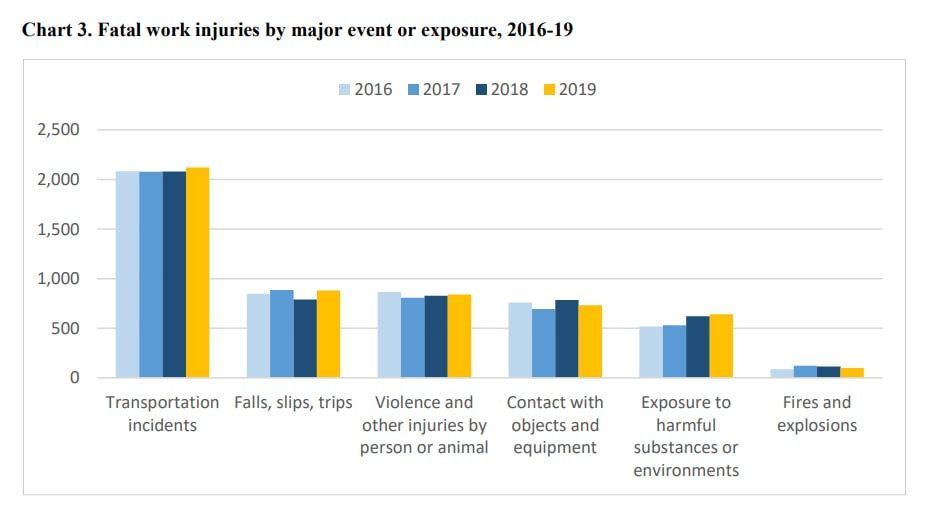The most recent data from the Bureau of Labor Statistics reports a total of 5,333 fatal work injuries in 2019, which represents the highest number of workplace fatalities since 2007. Meanwhile, private industry employers reported 2.8 million nonfatal workplace injuries and illnesses.
For National Safety Month, let’s take a deeper look at these important workplace findings.
Workplace fatal injury data
The U.S. workforce experienced the largest number of occupational deaths in over a decade. So, it’s important to look at the data to better understand which industries and populations are most vulnerable to these tragic events.
Here’s a summary of key findings from the 2019 Census of Fatal Occupational Injuries:
-
One U.S. worker died every 99 minutes from a work-related injury.
-
Occupational fatalities for workers aged 55 and over increased by 8% compared to 2018. This is the largest number of fatalities ever recorded for this age group.
-
There was a 13% increase in fatalities for Hispanic and Latino workers.
-
The private construction industry saw a 5% increase in fatalities.
-
Workplace deaths due to suicide and unintentional overdoses slightly increased in 2019.
Some of the most common fatal work injuries include transportation incidents, with a total of 2,122 reported cases in 2019.

Source: BLS News Release, National Census of Fatal Occupational Injuries in 2019
Other major fatal events or exposures categories include falls, slips, trips; violence and other injuries by person or animal; contact with objects and equipment; exposure to harmful substances or environments; fires and explosions.
What causes nonfatal work injuries?
There were a total of 888,220 nonfatal injuries and illnesses that caused a worker to miss at least one day in 2019. From these reported nonfatal workplace injuries and illnesses, ten occupations accounted for about one-third of all cases involving days away from work.
Listed from highest to lowest incidence rates that resulted in days away from work, these injury-prone occupations are grouped as follows:
-
Nursing assistants
-
Heavy and tractor-trailer truck drivers
-
Laborers and freight, stock and material movers, hand
-
Light truck drivers
-
Construction laborers
-
Maintenance and repair workers, general
-
Stockers and order fillers
-
Janitors and cleaners, except maids and housekeeping cleaners
-
Registered nurses
-
Retail salesperson
Common nonfatal workplace injuries involve sprains, tears, strains, lacerations, punctures, cuts, contusions, bruises and fractures.
Preventing incidents before they happen
One of the best ways to reduce the overall number of workplace fatalities and injuries is for employers to take proactive safety measures. This involves implementing safety and health programs that actively engage workers and leadership at all levels.
HSI can help! We offer training, safety management and compliance solutions for businesses of any size. Visit HSI.com to learn more.







.png?width=600&name=HSI-CTA-EmergencyCareTraining%20(1).png)











Comments